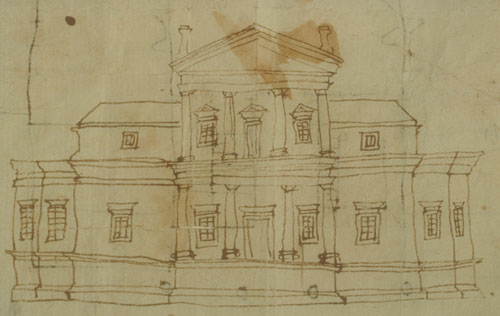Authors:
Historic Era: Era 3: Revolution and the New Nation (1754-1820s)
Historic Theme:
Subject:
Fall 2017 | Volume 62, Issue 5


Authors:
Historic Era: Era 3: Revolution and the New Nation (1754-1820s)
Historic Theme:
Subject:
Fall 2017 | Volume 62, Issue 5
It is ironic that Mount Vernon, George Washington's Classical estate on the Potomac, has become so widespread a model for American building, for it was not Washington but Thomas Jefferson who self-consciously undertook a search for an architectural expression for the new nation.
Jefferson's architectural hero was Palladio, the late Renaissance Italian architect, and he carefully studied the Four Books of Architecture. Jefferson was appalled by the divergence from the original models not only in Colonial copies of Palladian buildings but in the far grander English examples as well. After a visit to England in 1785, he declared, "Their architecture is in the most wretched style I ever saw, not meaning to except America, where it is bad, nor here in Virginia, where it is worse than in any other part of America I have seen."'
In 1767, at the age of 24, Jefferson set out to put his studies into practice, designing a house to be built on a hilltop across the Rivanna River from his father's plantation, looking westward to the Indian country beyond the Piedmont. The decision to build on a hilltop site, despite numerous practical problems including a shortage of water, reflected Jefferson's soaring imagination and belief in the nearly limitless possibilities inherent in the vast continental expanse.
The name Jefferson chose for his new plantation — Monticello — and to some extent its siting, paid homage to Palladio, who recommended that a house be built in an "elevated and cheerful" place (a choice he deemed second only to a site along a river). "Monticello" translates as "little mountain"; but where Palladio would have applied the term to hillocks such as those along the Venetian coastline, Jefferson used it to describe a looming eight-hundred-foot promontory that was, despite its height, merely a foothill to the mountains that lay beyond. In the New World, even Arcadia was superscaled. Jefferson cropped and terraced the hill, planting gardens and orchards that contrasted with the surrounding forest to create a village for his "family," which by 1774 included twenty-nine slaves assigned to the house.
